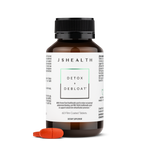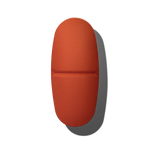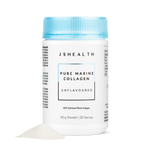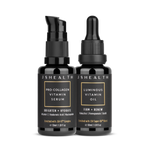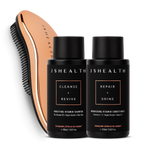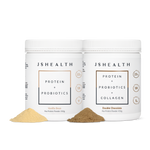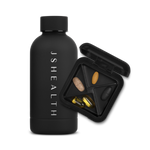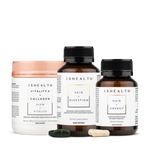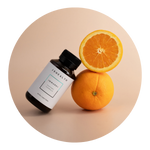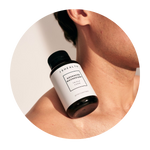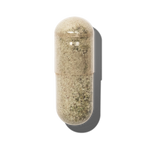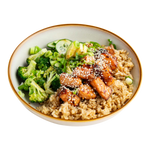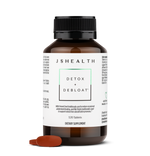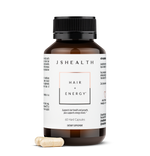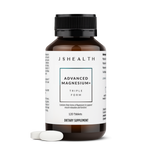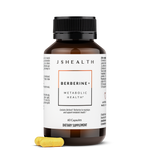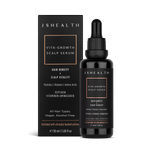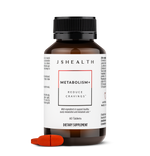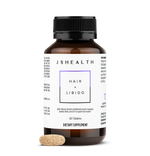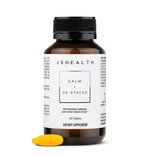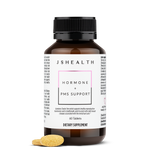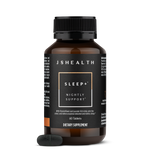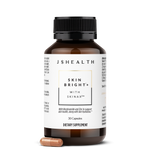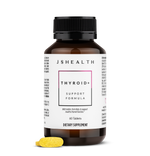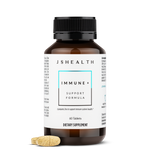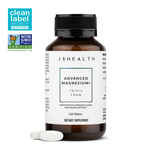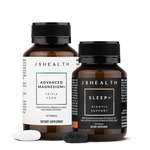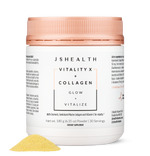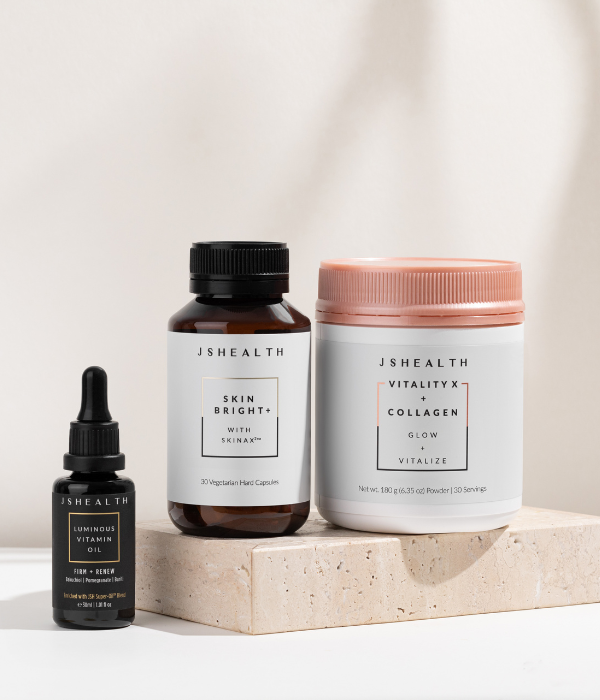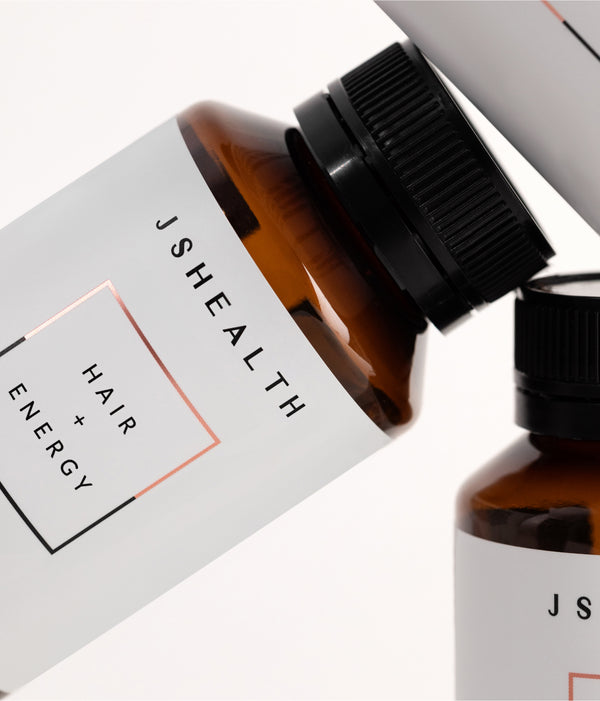25% OFF SUBSCRIPTIONS!*
Difference Between Complete and Incomplete Proteins
It’s widely known that protein is essential for the body — it repairs tissues, produces enzymes, creates hormones, and aids the immune system. However, many are unaware that there are two main different kinds of proteins, known as “complete” and " incomplete.”
In this article, we are going to take a closer look at the makeup of complete and incomplete proteins, where they can naturally be found and how they should fit into your wellness journey.
What Are Essential Amino Acids?
Before we compare and contrast the types of protein, let’s start with an understanding of what amino acids are.
Amino acids are the fundamental building blocks of proteins, and they are involved in a multitude of processes within the body. The body uses nine particularly important amino acids, called essential amino acids, to build and repair tissues like muscles, bones, and organs.
The body itself cannot create the essential amino acids, so we need to get them through the diet.
Here’s a list of each essential amino acid and what it does in the body:
- Histidine: It’s involved in the growth and repair of tissues and the creation of red and white blood cells. Histidine is also used to create histamine, which is a compound that aids in the regulation of the immune system.
- Isoleucine: Isoleucine is primarily used to balance blood sugar levels and produce energy. It’s also involved in muscle metabolism and synthesizing a protein called hemoglobin, which transports oxygen in the blood all over the body.
- Leucine: It’s critical in the process of muscle growth and repair and also aids in the maintenance of skin health and bone health.
- Lysine: Lysine is also important for the growth and repair of tissues, playing a central role in collagen production. It also helps the body produce certain hormones, enzymes, and antibodies.
- Methionine: Methionine helps to create creatine and choline, which are two important compounds in the body. It also helps to metabolize fats and detox unwanted substances in the liver.
- Phenylalanine: This amino acid produces neurotransmitters that regulate mood and behavior, like dopamine and norepinephrine.
- Threonine: Threonine helps to grow and repair tissues, produce antibodies and enzymes, metabolize fats and maintain skin, hair, and nail health.
- Tryptophan: Tryptophan is critical to the production of the neurotransmitter serotonin, which balances sleep and mood. It also helps produce a B vitamin called niacin, which promotes energy levels and nerve health.
- Valine: Valine is another essential amino acid that is involved with muscle growth and repair, blood sugar levels, and hemoglobin production.
What Are Complete Proteins?
Complete proteins contain all nine of the essential amino acids mentioned above. These amino acids are used to build proteins and are critical to many processes throughout the body. The body cannot synthesize essential amino acids on its own, however, so they must be consumed through diet or supplementation.
Where Can Complete Proteins Be Found?
Complete proteins can primarily be found in animal-based foods like meat, poultry, fish, eggs and dairy products. There are a few plant-basedsources of complete proteins, which can be found in soybeans, quinoa, and amaranth.
All foods that contain complete proteins are also considered to be “high-quality” protein sources. This doesn’t mean that they’re the only type of protein that should be consumed; it just means that they provide the most content of amino acids, which is very beneficial to the body.
Why Are Complete Proteins Important?
Complete proteins primarily support the growth and regenerative processes within the body. They also help to maintain enzymatic function, hormonal health, mental wellbeing, immune system health, and bone health.
Additionally, consuming complete protein can give you feelings of fullness for longer periods. This can support weight management, metabolic health, and overall wellness.
What Are Incomplete Proteins?
Incomplete proteins are proteins that do not contain all nine of the essential amino acids. Instead, they are either very low or completely lacking in one or more of these building blocks.
Where Can Incomplete Proteins Be Found?
Incomplete proteins are mostly found in plant-based foods. Examples of incomplete proteins include legumes, grains, nuts, seeds, and some vegetables. Some animal-based foods, like gelatin and collagen, are also incomplete proteins — they lack at least one of the nine essential amino acids.
Contrary to “high-quality” proteins, incomplete proteins are considered “low-quality” sources because they don’t have all the amino acids that the body requires to function.
What’s interesting about incomplete proteins, though, is that they can be (and are often) combined with other incomplete proteins to create a dish that contains all the essential amino acids. For example, if you add beans to rice, you are eating a “complete” protein — each food is contributing its own amino acid profile.
Why Are Incomplete Proteins Important?
Although incomplete proteins lack essential amino acids, they can benefit the body in other ways. Sources of incomplete proteins are often high in fiber, vitamins, and minerals, which all help to maintain overall wellness. Consuming plant-based proteins is a great way to maintain metabolic and heart health.
Another positive, yet often overlooked, aspect of plant-based proteins is that they are more environmentally friendly and energy sustainable than animal-based products. On average, it requires fewer resources to produce incomplete protein sources, and they leave a lower carbon footprint. By and large, animal protein sources use up more valuable land, water, and energy.
Which One Should I Eat?
Consuming both complete and incomplete proteins is a fantastic way to maintain overall health and wellness. Not only will you give your body all the amino acids it needs to properly function, but you’ll also give it the secondary nutritional benefits that come with incomplete protein sources.
If you are someone who is trying to either build or maintain muscle mass, complete proteins are particularly important. Athletes, bodybuilders and even those who just live an active lifestyle can all greatly benefit from consistently receiving all nine essential amino acids. Your body’s natural regenerative and growth processes will be adequately supported, making it easier to maintain energy levels.
If you are a vegetarian, try to consume plenty of eggs and cheese along with plant-based foods to ensure you are getting enough high-quality protein.
If you are vegan, remember to combine plant-based protein sources so that you get all of the essential amino acids into your diet.
How To Incorporate Sources of Protein into Your Diet
It can sometimes be hard to tell if you are getting enough protein on a daily basis, especially with our modern food/eating paradigms. Here are our top tips for getting more protein into your routine:
Opt for High-Protein Foods
When you can, pick foods that pack high amounts of protein. Animal products like chicken, lean beef, and eggs are some of the highest sources of animal protein, and tofu, tempeh, hummus, whole grains, black beans, and peanut butter are some of the highest sources of plant protein.
You can also try to incorporate various different forms of incomplete protein as complementary proteins, meaning when consumed together, they’ll provide you with all the amino acids you need.
Plan Your Meals
Although it’s not always possible, planning your meals ahead of time can ensure that you are getting sufficient amounts of protein each day. High-quality protein options are not always available at restaurants, so this will allow you to have more control over the content of your meals.
Eat Protein-Packed Snacks
You don’t always have to have your meals centered around protein — snacking is also a good opportunity to get some protein in during the day. Additionally, you feel fuller between meals and have steadier energy levels. The next time you feel like a snack, try almonds, seeds, Greek yogurt, or any type of jerky.
Use Protein-Rich Ingredients When Cooking
Cooking is also a good opportunity to incorporate protein. It’s fairly easy to incorporate foods like lentils, chickpeas, quinoa, and tempeh into all sorts of dishes. They are versatile and work with many different cuisines, flavors, and spices.
Should You Supplement With Protein?
If you are concerned about not getting enough protein in your diet, another easy, reliable, and delicious option is to supplement with a protein powder. The JSHealth Protein + Probiotics powder is the perfect way to get your dose of protein goodness each day!
It can help you:
- Support muscle recovery
- Support lean muscle mass and body weight
- Support immune system health
- Maintain a healthy gut microbiome
Summary
The nine essential amino acids are nutrients that the body needs to function. However, your body does not produce them automatically, so you must get them through your diet every day. These amino acids can be found in proteins — complete proteins contain all nine, while incomplete proteins do not.
It’s beneficial to incorporate both types of proteins into your diet — high-quality proteins, mostly found in animal-based products, will supply your body with those crucial amino acids, and low-quality proteins will provide some amino acids, plus other important nutrients like fiber, vitamins, and minerals.
Sources:
A Vegan Diet: Eating for the Environment | PCRM
An Overview on Essential Amino Acids and Branched Chain Amino Acids | ScienceDirect
